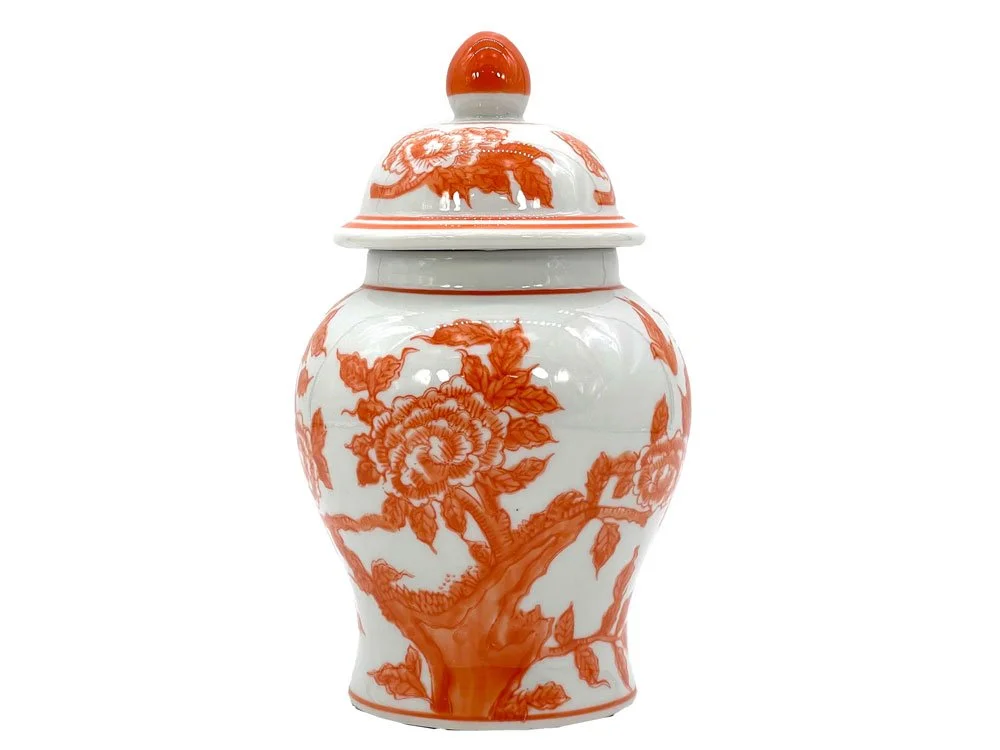What is Chinoiserie?
We still hear the question, “What is Chinoiserie?” when discussing about Home Decor. We wanted to give a brief history of the origins and styles of the classic design of Chinoiserie.
Chinoiserie is a style that emerged in Europe in the 17th and 18th centuries, characterized by a fascination with Chinese decorative arts and culture. It became popular during the Rococo period, and it influenced a wide range of art forms, including ceramics. Chinoiserie ceramic pottery is still highly sought after by collectors today, and it continues to inspire contemporary designers.
The History of Chinoiserie
Chinoiserie emerged during a time of increased trade between Europe and China. The East India Company, established in 1600, was instrumental in bringing Chinese goods to Europe. Chinese porcelain was especially prized, and it was used as a model for European potters to emulate.
The earliest examples of Chinoiserie pottery in Europe date back to the early 17th century, when Dutch potters began producing blue-and-white ceramics inspired by Chinese designs. These ceramics were popular throughout Europe, and they influenced the development of other styles, such as Delftware in the Netherlands and faience in France.
Chinoiserie reached its peak of popularity in the 18th century during the Rococo period. The style was characterized by intricate patterns, asymmetry, and a whimsical, playful aesthetic. Chinoiserie motifs included pagodas, dragons, birds, flowers, and other elements drawn from Chinese art and culture.
Types of Chinoiserie Ceramic Pottery
Chinoiserie ceramic pottery includes a wide range of forms, from teapots and vases to figurines and plates. Some of the most famous examples of Chinoiserie pottery are the blue-and-white porcelain produced in Jingdezhen, China, during the Ming and Qing dynasties. These ceramics were highly prized by European collectors, and they served as a model for European potters to emulate.
European potters produced their own versions of Chinese porcelain, often using a technique called "soft-paste" porcelain, which was easier to work with than the hard-paste porcelain used in China. Some of the most famous makers of Chinoiserie pottery include Meissen in Germany, Sevres in France, and Wedgwood in England.
Chinoiserie ceramic pottery was also produced in other parts of the world, such as Japan, where potters developed their own unique style of porcelain that combined elements of Chinese and Japanese art.
Uses of Chinoiserie Ceramic Pottery
Chinoiserie ceramic pottery was used for a wide range of purposes, from everyday tableware to decorative objects. Teapots and tea sets were particularly popular, as tea-drinking became fashionable in Europe during the 18th century. Vases, urns, and other decorative objects were also produced, often adorned with Chinoiserie motifs such as dragons or pagodas.
Chinoiserie ceramic pottery was also used to create figurines, often depicting Chinese or other Asian figures in European dress. These figurines were popular among collectors and were often used to decorate mantelpieces or cabinets.
In the 21st century, Chinoiserie ceramic pottery continues to be popular among collectors and designers. Contemporary designers often draw inspiration from Chinoiserie motifs and incorporate them into their own designs, creating a fusion of Chinese and European decorative styles.
In conclusion, Chinoiserie ceramic pottery is a style that emerged during a time of increased trade between Europe and China. It was characterized by a fascination with Chinese decorative arts and culture and included a wide range of forms, from teapots and vases to figurines and plates. Chinoiserie pottery was used for a wide range of purposes, from everyday tableware to decorative objects, and it continues to inspire contemporary designers today.








